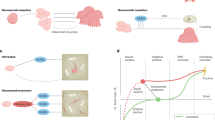Abstract
Denosumab is an investigational, fully human monoclonal antibody with a high affinity and specificity for receptor activator of nuclear factor κ B ligand (RANKL), a cytokine member of the tumor necrosis factor family. RANKL, an essential mediator of osteoclast formation, function, and survival, plays a major role in the pathogenesis of postmenopausal osteoporosis, structural damage in rheumatoid arthritis, and bone loss associated with other skeletal disorders. Denosumab suppresses bone turnover by inhibiting the action of RANKL on osteoclasts. Denosumab reduces bone turnover and increases bone mineral density in postmenopausal women with low bone mineral density, reduces fracture risk in women with postmenopausal osteoporosis, and inhibits structural damage in patients with rheumatoid arthritis when added to ongoing methotrexate treatment. It is generally well tolerated, with a good safety profile. Adverse and serious adverse events, including infections and malignancy, are similar in patients treated with denosumab or placebo.
Similar content being viewed by others
References and Recommended Reading
Klibanski A, Adams-Campbell L, Bassford T, et al.: Osteoporosis prevention, diagnosis, and therapy. JAMA 2001, 285:785–795.
US Department of Health and Human Services: Bone Health and Osteoporosis: A Report of the Surgeon General. Rockville, MD: US Department of Health and Human Services, Office of the Surgeon General; 2004.
Burge R, Dawson-Hughes B, Solomon DH, et al.: Incidence and economic burden of osteoporosis-related fractures in the United States, 2005–2025. J Bone Miner Res 2007, 22:465–475.
International Osteoporosis Foundation: IOF Osteoporosis Teaching Slide Kit. Available at http://www.osteofound.org/health_professionals/teaching_resources/slide_kit.html. Accessed March 2006.
Dennison E, Cooper C: Epidemiology of osteoporotic fractures. Horm Res 2000, 54(Suppl 1):58–63.
Cooper C: The crippling consequences of fractures and their impact on quality of life. Am J Med 1997, 103(2A):12S–19S.
Walsh NC, Crotti TN, Goldring SR, Gravallese EM: Rheumatic diseases: the effects of inflammation on bone. Immunol Rev 2005, 208:228–251.
Kavanaugh A: Economic consequences of established rheumatoid arthritis and its treatment. Best Pract Res Clin Rheumatol 2007, 21:929–942.
Bekker PJ, Holloway DL, Rasmussen AS, et al.: A singledose placebo-controlled study of AMG 162, a fully human monoclonal antibody to RANKL, in postmenopausal women. J Bone Miner Res 2004, 19:1059–1066.
Collin-Osdoby P: Regulation of vascular calcification by osteoclast regulatory factors RANKL and osteoprotegerin. Circ Res 2004, 95:1046–1057.
Simonet WS, Lacey DL, Dunstan CR, et al.: Osteoprotegerin: a novel secreted protein involved in the regulation of bone density. Cell 1997, 89:309–319.
Hofbauer LC, Schoppet M: Clinical implications of the osteoprotegerin/RANKL/RANK system for bone and vascular diseases. JAMA 2004, 292:490–495.
Bekker PJ, Holloway D, Nakanishi A, et al.: The effect of a single dose of osteoprotegerin in postmenopausal women. J Bone Miner Res 2001, 16:348–360.
Lobo ED, Hansen RJ, Balthasar JP: Antibody pharmacokinetics and pharmacodynamics. J Pharm Sci 2004, 93:2645–2668.
Tang L, Persky AM, Hochhaus G, Meibohm B: Pharmacokinetic aspects of biotechnology products. J Pharm Sci 2004, 93:2184–2204.
Peterson MC, Stouch BJ, Martin SW, et al.: The pharmacokinetics of denosumab (AMG 162) following various multiple subcutaneous dosing regimens in postmenopausal women with low bone mass. J Bone Miner Res 2005, 20(Suppl 1):S293.
McClung MR, Lewiecki EM, Cohen SB, et al.: Denosumab in postmenopausal women with low bone mineral density. N Engl J Med 2006, 354:821–831.
Lewiecki EM, Miller PD, McClung MR, et al.: Two-year treatment with denosumab (AMG 162) in a randomized phase 2 study of postmenopausal women with low bone mineral density. J Bone Miner Res 2007, 22:1832–1841.
Miller PD, Bolognese MA, Lewiecki EM, et al.: Effect of denosumab on bone density and turnover in postmenopausal women with low bone mass after long-term continued, discontinued, and restarting of therapy: a randomized blinded phase 2 clinical trial. Bone 2008, 43:222–229.
Bone HG, Bolognese MA, Yuen CK, et al.: Effects of denosumab on bone mineral density and bone turnover in postmenopausal women. J Clin Endocrinol Metab 2008, 93:2149–2157.
Brown JP, Prince RL, Deal C, et al.: Comparison of the effect of denosumab and alendronate on bone mineral density and biochemical markers of bone turnover in postmenopausal women with low bone mass: a randomized, blinded, phase 3 trial. J Bone Miner Res 2009, 24:153–161.
Kendler DL, Benhamou CL, Brown JP, et al.: Effects of denosumab vs alendronate on bone mineral density (BMD), bone turnover markers (BTM), and safety in women previously treated with alendronate. J Bone Miner Res 2008, S473.
Cummings SR, McClung MR, Christiansen C, et al.: A phase III study of the effects of denosumab on vertebral, nonvertebral, and hip fracture in women with osteoporosis: results from the FREEDOM trial. J Bone Miner Res 2008, 23(Suppl 1):S80.
Amgen Inc: Form 8-K. Available at http://investors.amgen.com/phoenix.zhtml?c=61656&p=irol-sec. Accessed September 2008.
Cohen SB, Dore RK, Lane NE, et al.: Denosumab treatment effects on structural damage, bone mineral density, and bone turnover in rheumatoid arthritis: a twelve-month, multicenter, randomized, double-blind, placebo-controlled, phase II clinical trial. Arthritis Rheum 2008, 58:1299–1309.
Arnett FC, Edworthy SM, Bloch DA, et al.: The American Rheumatism Association 1987 revised criteria for the classification of rheumatoid arthritis. Arthritis Rheum 1988, 31:315–324.
McQueen F, Lassere M, Edmonds J, et al.: OMERACT Rheumatoid Arthritis Magnetic Resonance Imaging Studies. Summary of OMERACT 6 MR Imaging Module. J Rheumatol 2003, 30:1387–1392.
van der Heijde D: How to read radiographs according to the Sharp/van der Heijde method. J Rheumatol 2000, 27:261–263.
Cohen SB, Lewiecki EM, Liu Y, et al.: Phase 2 study of denosumab (AMG 162) in postmenopausal women: subanalyses and supplemental safety. J Bone Miner Res 2005, 20(Suppl 1):S295.
Author information
Authors and Affiliations
Corresponding author
Rights and permissions
About this article
Cite this article
Lewiecki, E.M. Denosumab for joints and bones. Curr Rheumatol Rep 11, 196–201 (2009). https://doi.org/10.1007/s11926-009-0027-z
Published:
Issue Date:
DOI: https://doi.org/10.1007/s11926-009-0027-z




